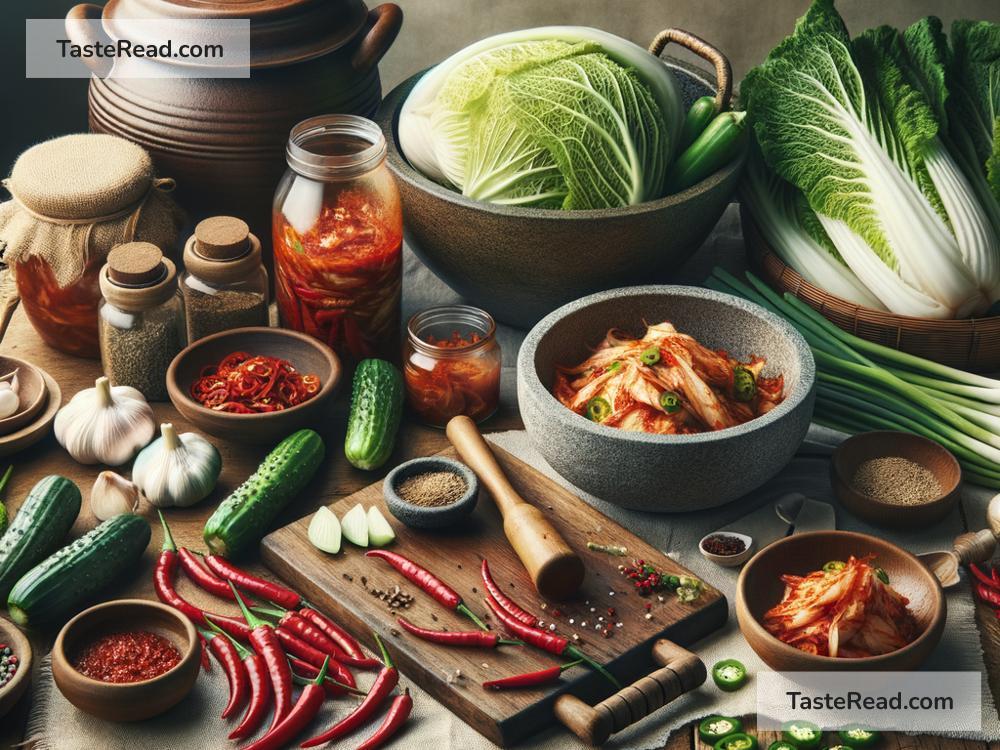Exploring the Roots of Korean Kimchi
Korean cuisine is cherished the world over for its vibrancy, depth of flavor, and the perfect balance of spice and freshness it brings to the table. Among its diverse and colorful array of dishes, one has risen above to claim international fame: Kimchi. This traditional side dish, made from fermented vegetables, most commonly napa cabbage and Korean radishes, mixed with a variety of seasonings, is not just food but a cultural emblem of Korea. So, how did this humble dish become so integral to Korean culture and cuisine? Let’s dive into the fascinating roots of Korean Kimchi.
A Journey Back in Time
The story of Kimchi begins over a thousand years ago in Korea. Originally, it started as a simple way to preserve vegetables for the winter months. The early forms of Kimchi were not spicy as the chili peppers that are now synonymous with the dish were not introduced to Korea until the early 17th century, following their introduction to East Asia from the Americas. This initial form of Kimchi was called “jeotgukji” and was made by fermenting vegetables in brine.
The Introduction of Chili Peppers
The game-changer for Kimchi came with the introduction of chili peppers. With this, Kimchi found its fiery soul. The peppers not only added a vibrant heat but also acted as an additional preservative, allowing the Kimchi to last longer. This led to the development of the diverse variety of Kimchi we see today, with every region in Korea creating its unique flavor profile based on local ingredients and preferences.
Nutritional Powerhouse
One of the reasons Kimchi has remained an essential part of Korean meals is its nutritional value. Kimchi is packed with vitamins A and B, minerals, and as it’s fermented, it’s rich in beneficial probiotics. These probiotics are excellent for gut health, proving that this dish is not only delicious but also very good for you. The combination of health benefits and the depth of flavors makes Kimchi a standout dish in Korean cuisine.
The Cultural Significance
Beyond its taste and health benefits, Kimchi holds profound cultural significance in Korea. It’s a symbol of Korean ingenuity, adaptability, and communal spirit. The process of making Kimchi, known as ‘Kimjang,’ involves families, friends, and communities coming together to prepare and share Kimchi, ensuring that everyone has enough to last through the winter. This communal aspect of Kimchi preparation has been recognized by UNESCO, listing Kimjang on the Representative List of the Intangible Cultural Heritage of Humanity.
Modern Kimchi
Today, Kimchi continues to evolve, with chefs and home cooks alike experimenting with ingredients, techniques, and flavors. It’s used in everything from traditional Korean dishes to fusion cuisine, showing its versatility and universal appeal. Despite these innovations, the heart and soul of Kimchi remain rooted in its rich history and cultural significance.
In Summary
The journey of Kimchi, from a simple method of preserving vegetables to becoming a global culinary phenomenon, is a testament to the enduring nature of Korean culture and cuisine. It’s more than just a side dish; it’s a cultural heritage, a nutritional powerhouse, and a symbol of Korean unity. As we explore the roots of Korean Kimchi, we come to appreciate not just the depth of flavor it adds to our meals, but the depth of history and culture it represents.


